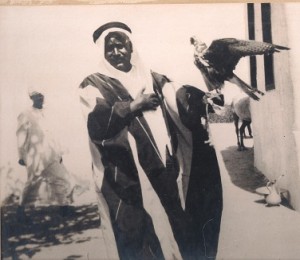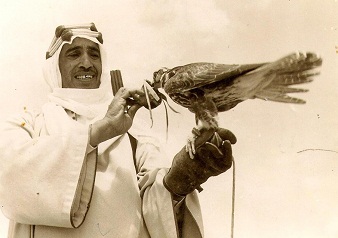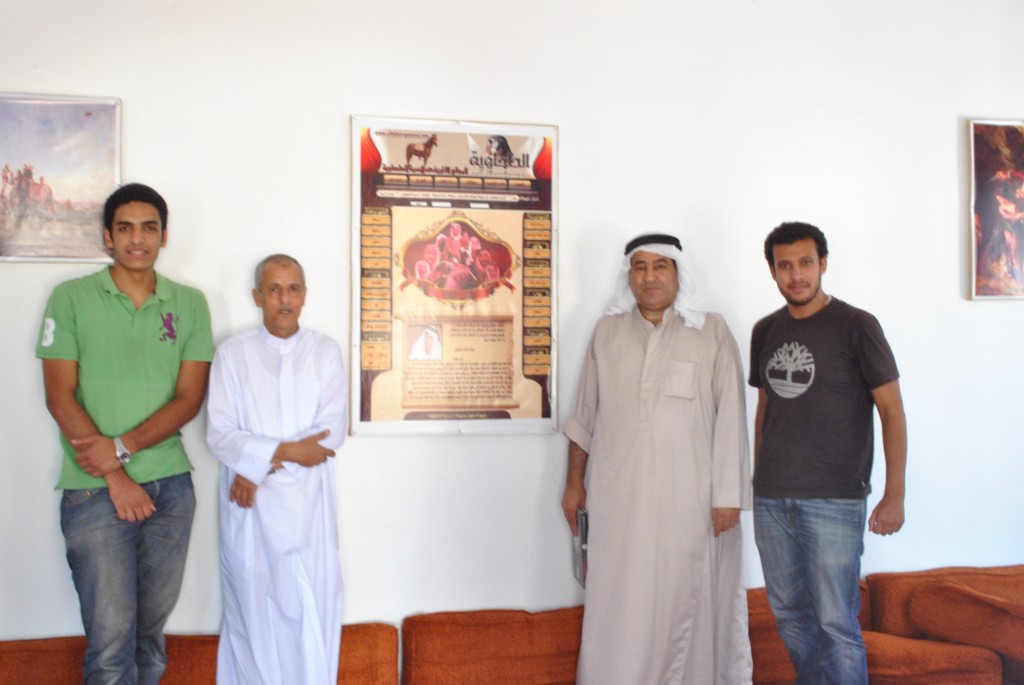Gzert Saod is a small village in the Al-Sharkyia governorate that has been home to generations of the Al-Tahawy family. The family’s history and traditions are passed from generation to generation and, to this day, the current members of the Al-Tahawya family keep the tradition of hunting with hawks alive.
Maintaining this heritage is not without controversy though. “Hunting with hawks is treated like dealing with drugs,” Sheikh Metlq Al-Tahawy said, referring to an environmental law that forbids hunting with hawks and imposes fines of up to EGP 50,000 on those who breach it.
The hawks used are ones that migrate to Egypt from Canada and Europe. According to Ahmed Foad Al-Tahawy, the hawks reach Egypt in September in search of food and a better climate. Before the hawks can be used in hunting though, they must first be caught themselves. There are two ways the hunters use to snare the coveted specimens.
In the first, the hunter uses a small local hawk as bait. A trap is set close to the smaller hawk that has a pigeon tied to its legs and is secured by a piece of rope to stay close to the trap. “There is a law between birds of prey,” Foad Al-Tahawy said. “The bigger ones steal prey from the smaller ones.” So when a larger hawk tries to secure an easy meal by going for the pigeon, it flies straight into the trap. The second method is a lot simpler; nets are used to trap unsuspecting birds.
After a hawk is caught, the first thing the hunter will do is sew his eyelids shut and start feeding it from his hand. The hunter will give the hawk a name and use this repeatedly so the bird can get familiar with the trainer’s voice. This first stage lasts four days.
 On the fifth day the trainer will open the hawk’s eyes and will start training the hawk to become used to the sounds of people, dogs and cars. During this period, which can last two weeks, the trainer will keep using the hawk’s name and by talking to the hawk continually the bird will become familiar with the sound of the trainer’s voice. The training then focuses on getting the hawk to return when the trainer calls it. This is done by securing the legs of the hawk to a length of cord, letting it fly and calling it back. As the bird makes progress, the trainer lengthens the cord.
On the fifth day the trainer will open the hawk’s eyes and will start training the hawk to become used to the sounds of people, dogs and cars. During this period, which can last two weeks, the trainer will keep using the hawk’s name and by talking to the hawk continually the bird will become familiar with the sound of the trainer’s voice. The training then focuses on getting the hawk to return when the trainer calls it. This is done by securing the legs of the hawk to a length of cord, letting it fly and calling it back. As the bird makes progress, the trainer lengthens the cord.
The last part of the training involves the risk of losing the hawk. The hawk is let loose to fly on its own and, using the name and words used during the previous weeks, the trainer calls his hawk back. If the hawk returns at the call of his trainer, the loyalty of the bird is tested by calling its name while the trainer hides from view, forcing the bird to seek out its master. When all goes well the hawk is introduced to the prey it will be expected to hunt. “Hawks can be trained to hunt gazelles, pigeons, rabbits and even foxes,” Foad Al-Tahawy said.
The qualities and traits of the hawks differ from type to type. The biggest hawks in Egypt are called Al-Hor and they are considered the best. Second tier hawks are known as Shaheen and the small, local birds are called Shrias. “An Al-Hor can hunt up to eight times a day,” Foad El Tahawy said, explaining why the hawk can cost up to EGP 100,000. Not all hawks are as expensive though; one of the local Shrias can be bought for as little as EGP 50.
In 1994 an environmental law was passed that declared hunting with hawks illegal, with the aim of maintaining environmental equilibrium. Foad El Tahawy is not impressed with this reasoning, “if the government want to save the environment, let it take a look at the cement factory and at what is thrown in the Nile.”
Fouad El Tahawy continued, “hunting with hawks is something Allah allows and it only lasts for three months. After this the hawks are released in the wild again, so how could this possibly be creating an unbalance in environment? The real damage to the environment is done by the Khalijis, men from the Gulf region, who come to Egypt to hunt with guns and 4×4 cars under the guise of tourism.”






